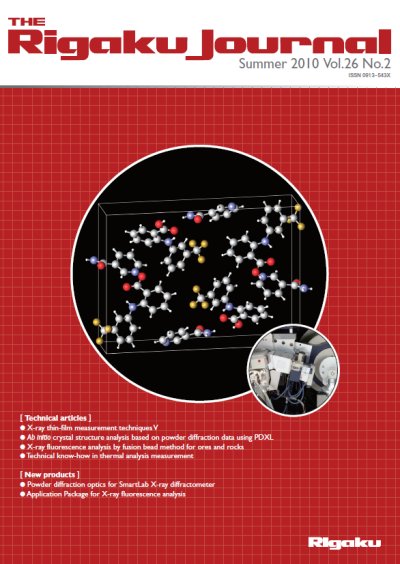Physical and chemical properties of a crystalline solid depend strongly on the molecular arrangement, that is, on both the crystal structure and the composition of the molecule comprising the solid. In order to understand the mechanisms and developing properties of a crystalline solid, it is essential to know the crystal structure. Typically, crystal structure analysis has been performed using hundreds or thousands of X-ray intensity data collected from a single crystal. The data is collected with a four-circle diffractometer or a diffractometer equipped with an image plate or other 2D detector. Just 10 years ago, single crystals several hundred microns in diameter were needed. Recent improvements in X-ray sources and detectors enable the collection of intensity data which can be used in the analysis of crystal structures from crystal specimens measuring only a few microns across.
There are many substances which cannot be grown to a single crystal of quality and size sufficient for single crystal diffraction measurements. Inorganic compounds have often had their crystal structures analyzed using the Rietveld method devised in 1969. Fundamentally, the Rietveld method is used to refine crystal structure parameters such as lattice constants, atomic coordinates, occupancies, temperature factors, etc. based on powder diffraction data. There are many groups of inorganic compounds which have almost identical composition and crystal structure. In these cases, the crystal structure can usually be solved using the Rietveld method using the structure parameters of an analogous compound as the initial structural model.
On the contrary, since organic compounds are formed molecular crystals, their crystal structures are affected by even very small changes in composition. This makes it exceptionally difficult to perform ab initio crystal structure analysis of organic compounds using only the Rietveld method.
Then, how can we determine the ab initio crystal structure of organic compounds from powder diffraction data? There are several steps in the analysis procedure. While intensity data of independent diffraction spots are collected from single crystal diffraction measurements, with powder diffraction measurements, the diffraction spots, 3-dimensionally arranged in the reciprocal space, are compressed to 1- dimensional diffraction patterns. As a result, the number of intensity readings from independent diffraction spots decreases. For this reason, crystal structure analysis based on powder diffraction data collected with the methods used for single crystal diffraction data is often unsuccessful.
This paper describes the analytical process used for the ab initio crystal structure determination of, in particular, organic compounds based on powder diffraction data. It also introduces PDXL, the integrated X-ray powder diffraction software package in which all these features are implemented.

